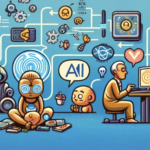
SaaS vs. PaaS – what’s the difference?
SaaS is “software as a service” while PaaS is “platform as a service.”
SaaS is a new model of software delivery that allows users to access and use software over the internet. PaaS is an emerging technology that builds on top of SaaS, and provides a platform for developing and deploying applications.
Table of Contents
Key differentiators between SaaS and PaaS
SaaS is focused on delivering software to users, while PaaS (pronounced “Pass”) is focused on providing a platform for developing and deploying applications.
In other words, SaaS is about using existing software, while PaaS is about creating new software.
PaaS has become popular in recent years because it offers a number of advantages over traditional software development approaches.
These advantages include:
Increased efficiency
With PaaS, developers no longer need to install and configure software development tools or manage server infrastructure. This can save time and money, and help developers focus on writing code.
Increased scalability
PaaS can handle sudden spikes in demand for applications, making it a good choice for businesses that experience rapid growth.
Improved reliability
PaaS platforms are typically more reliable than traditional software development approaches, because they are hosted in the cloud.
Reduced costs
PaaS can often reduce costs compared to traditional software development approaches.
For example, businesses may not need to purchase or maintain their own server hardware and software when using a PaaS platform.
PaaS Limitations
PaaS is still a relatively new technology, and there are some limitations to consider.
Chief among these limitations is the fact that PaaS platforms are still relatively new, and may not offer all of the features and capabilities that businesses need. Another limitation is that PaaS platforms can be expensive, depending on the provider.
Despite these limitations, PaaS offers a number of advantages over traditional software development approaches, and is likely to become even more popular in the years ahead.
What is IaaS?
IaaS is a cloud computing model in which a service provider provides customers with access to infrastructure, including storage, networking, and computing resources, on a pay-as-you-go basis.
IaaS is often seen as the most basic form of cloud computing, as it enables organizations to rent virtualized IT resources from a service provider and use them to build and run applications in the cloud. In contrast to other models of cloud computing, such as Platform as a Service (PaaS) and Software as a Service (SaaS), IaaS provides customers with more control over their applications and data.
IaaS providers typically offer a range of services, including compute (virtual machines), storage, networking, and sometimes even application-level services such as monitoring and load balancing.
Customers can use these services to build and run just about any type of application in the cloud, from simple web apps to complex data-intensive workloads.
IaaS is a popular choice for organizations that want the flexibility and control that comes with running applications in the cloud, but don’t want the hassle and expense of building and maintaining their own infrastructure. IaaS providers typically offer a wide range of services, which can be divided into three broad categories: compute, storage, and networking.
Compute services provide customers with access to virtualized computing resources, including CPUs, memory, and storage.
These resources can be used to run just about any type of application in the cloud.
Storage services provide customers with access to durable, scalable storage in the cloud.
These services can be used to store data of all types, including application data, images, videos, and backups.
Networking services provide customers with access to virtualized networking resources, including load balancers, firewalls, and DNS servers.
These services can be used to build and manage complex network architectures in the cloud.
IaaS providers typically charge customers for the use of their services on a pay-as-you-go basis.
This means that customers only pay for the resources they use, and they can scale up or down as needed without having to make a long-term commitment.
Pay-as-you-go pricing makes it easy for organizations to get started with IaaS, and it also gives them the flexibility to scale their use of resources as their needs change.
Summary – SaaS vs. PaaS vs. IaaS
Software vs. Platform vs. Infrastructure
SaaS is a software as a service delivery model.
PaaS is a platform as a service delivery model.
IaaS is an infrastructure as a service delivery model.
SaaS provides access to software that is managed by the provider.
PaaS provides access to a platform that is managed by the provider.
IaaS provides access to infrastructure that is managed by the provider.
Web browser vs. API vs. Web-based control panel
SaaS applications are typically accessed via a web browser.
PaaS applications are typically accessed via an application programming interface (API).
IaaS services are typically accessed via an API or a web-based control panel.
Ease of use vs. Customizability vs. Control
SaaS applications are generally easier to use than PaaS or IaaS applications.
PaaS and IaaS applications are generally more customizable than SaaS applications.
IaaS provides the most control over applications and data of any cloud computing model.
IaaS is a popular choice for organizations that want the flexibility and control that comes with running applications in the cloud, but don’t want the hassle and expense of building and maintaining their own infrastructure.


![Backwards 3: How to Type "Ɛ" [EASY]](https://softwareblade.com/wp-content/uploads/2022/02/Screen-Shot-2022-02-19-at-9.03.25-PM-150x150.png)